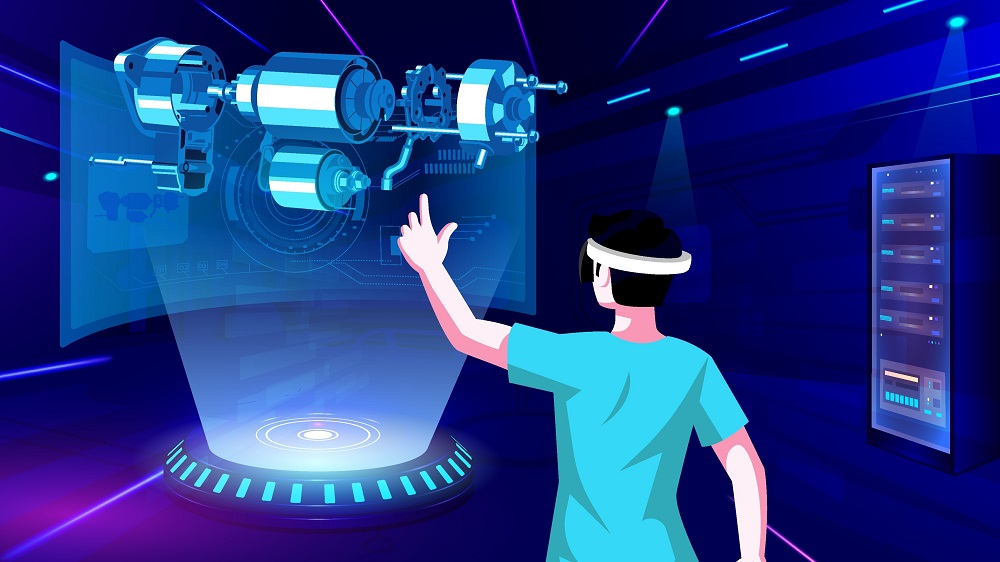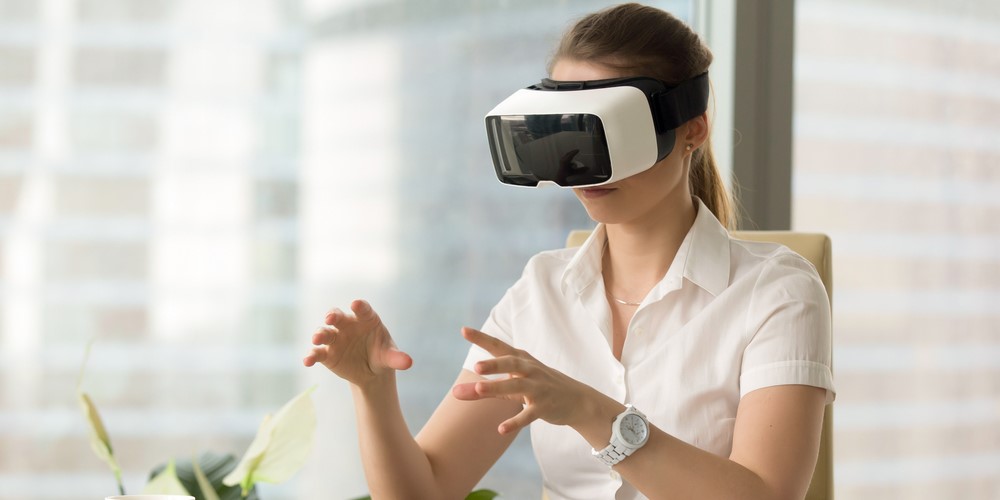Breaking Barriers with Immersive Engineering: Pushing Boundaries

You put on a headset, grab a set of controllers, and the light and pixels entering your eyes take you to a new world.
A virtual world where you can see and interact with all sorts of objects and environments in realistic detail and clarity of motion.
In the simplest terms, you just got your first taste of the immersive engineering behind VR.
Virtual Reality, in essence, is just that – a technology that lets you observe and interact with artificially rendered objects and settings as if they were real and right within your reach.
Usually, the whole setup consists of a headset, audio output, and controllers, but it can also rely upon a headset’s inbuilt audio output and sensors to achieve the same.
Gaming, like much in the world of digital technologies, has played a significant role in making Virtual Reality popular or ‘mainstream.
’ VR’s immersive engineering and gadgetry align pretty well with the immersive nature of gaming, providing greater immersion than what users could typically achieve.
A famous example of VR in gaming is ‘Beat Saber,’ which is a rhythm-based game that sees players slash through blocks with virtual lightsabers.
Over the years, VR has also become quite prominent in other industries, most significantly as a powerful tool for training and education.
Let’s take a look at some reasons why:
Experience as you Learn
Participating and practicing in simulated scenarios lets users ‘experience’ as they learn. Herein, they are able to manipulate the objects they are presented with, carry out tasks and see the results of their actions instantaneously.
This brings the gap between theories and practice sessions closer, helping people to learn faster and retain what they learn.
Realistic Simulations
The immersive engineering capabilities of VR dictate that people can access replicas of real-world places and situations.
These simulations can be completed with high levels of accuracy, making them immensely helpful in learning about and training in hazardous fields like medicine, factories, aviation, and others. Real-world accuracy helps obtain accurate data and results while performing VR-aided tasks.
Mistake-Friendly Environment
While using VR, users are placed in a safe environment, in a controlled setting where they can experiment and make mistakes without real-world consequences.
People can test on a variety of topics in this way with complete freedom and learn from their failures. It encourages people using VR to learn or train to explore other approaches and strategies without being penalized for it.
These are some fundamental reasons as to why VR is often seen as a game-changer for conventional training and teaching methods.
In some ways, it has already begun transforming how people learn and engage, and it’s viable to have an even larger impact on educational experiences in the long term.
How Immersive Engineering Enhances Skills and Practices

The general use of VR engineering and its services across different industries has steadily increased. Bless mods like Minecraft immersive engineering, for the market for VR in gaming is poised to hit $54 billion by 2028.
Contrast that to the predictions for VR in an industry like aviation, where it is predicted to hit $24 billion by 2031. It’s low, but a lot more optimistic and better from way back in 2021 when it was less than a billion dollars.
✔️ Designs and Making Prototypes
Engineers can leverage Virtual Reality to visualize 3-dimensional designs or models of their project in a virtual environment.
As a result, they can gain improved spatial understanding – by evaluating these designs or models in the 3D space before actually proceeding with a physical prototype.
As an added bonus, these virtual prototypes can be rigged with near-realistic properties and functions so that they can help identify problems or areas of improvement while in the design process.
✔️ Virtual Labs and Experiment Rooms
Nothing quite matches the rush of firing an immersive engineering revolver in VR while in Minecraft, but the same tech powering games in that way can be used to create virtual spaces that can work as labs and experiment rooms.
Engineers can rely on these spaces to get a hands-on experience with various operations and processes in their respective industries without having to rely on expensive and tricky equipment and their requirements.
Furthermore, this will allow the engineers to observe the results of their experiments, albeit as simulations, in controlled settings.
✔️ Training and Collaborations
VR makes it possible to teach engineering through modern tech. It can be used to host a virtual platform that not only reduces costs but is equally safe for allowing engineers to train and interact with simulations.
Many real-world scenarios can be adapted as virtual reality modules, including equipment maintenance, tasks in hazardous environments, assembly operations, etc.
This can be leveraged to give young engineers the opportunity to train their decision-making and enhance their skills, and collaborate with other teams, coupled with all the remote advantages of VR.
Overall, these benefits serve as an important indicator of how immersive engineering can help in improving the skills and practices of professionals and young engineers alike.
It vastly improves the design process, fixes any shortcomings in training and collaborations and provides companies with new opportunities to innovate, regardless of the industry they are in.
"Discover a World of Engineering Excitement: Break Through Limits with Immersive Experiences. Take the First Step Towards Innovation Today"
Analyzing the Impact of VR on Key Engineering Industries
The use of VR and VR-aided applications in creative industries like streaming, games and retail will comprise more than half of the VR market in the year 2025.
However, at the same time, according to Fortune Business Insights, it is expected that VR in the manufacturing industry will rise to nearly $15 billion – from once being only $925 million in 2018.
Now, there’s no doubt that immersive engineering is set to drive a range of benefits to various sectors, with some industries standing to gain more than others, such as:
✔️ Maintenance and Field Service:
On average, industries with regular use of practices involving maintenance work and field services can significantly benefit from seeing virtual Reality in engineering education and training.
This involves industries such as telecommunications, aerospace, and energy, among others that can leverage the use of simulations and replicas of real scenarios.
Engineers can brush up on their troubleshooting and repair skills in virtual settings, thereby reducing the downtime and costs in the field when working with existing tools and equipment.
✔️ Construction:
According to VR statistics (2022), the implementation of VR for immersive engineering can reduce the time required for model designs and construction by 10% and 7%, respectively.
With VR becoming more prevalent, this can only scale in the future – with use cases like VR-aided virtual walkthroughs of models and buildings. Additionally, it can bolster safety training for workers by educating them on construction site instructions, hazards and safety procedures.
✔️ Manufacturing and Assembly:
Many of the features powering VR for immersive engineering seem like a great fit for helping train engineers with the manufacturing and assembly processes.
Using either a VR headset or a specific application can open up factory workers to simulations of crucial operations about the manufacturing and assembly process.
Many things, ranging from complex types of machinery to necessary procedures and troubleshooting courses, can be offloaded to VR devices, thereby reducing the chances of errors while operating the actual equipment or tools.
To summarize, these are some of the key engineering industries that have started to either gain or stand to benefit the most from relying on virtual reality tools and software.
It’s important to note that while these sectors may seem as immediate as well as major beneficiaries, the capabilities of VR are broad, and the tech is continually improving, upgrading, and scaling.
So as the adoption rate for virtual Reality improves, it will continue to break barriers and push boundaries in various fields through innovations and immersive engineering.




